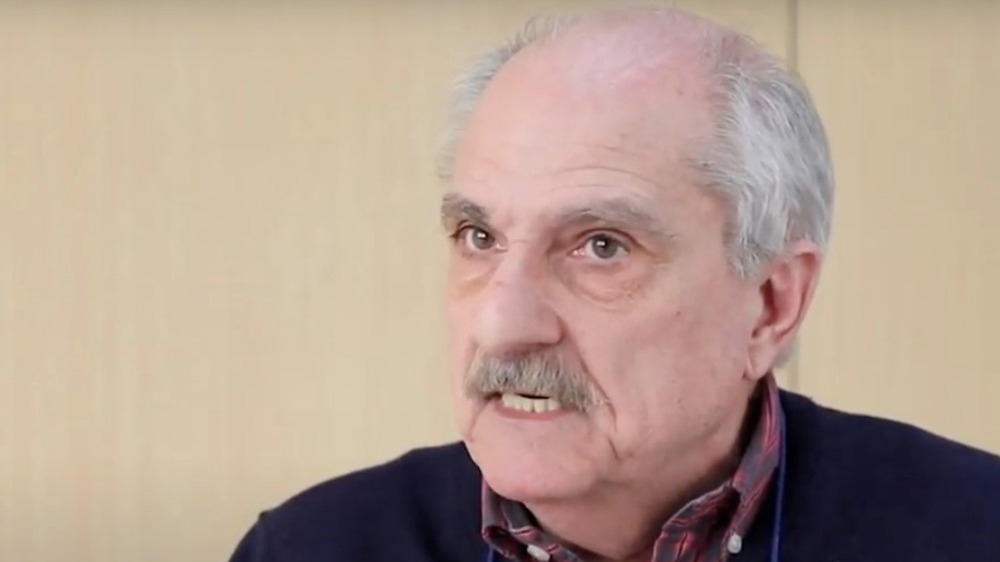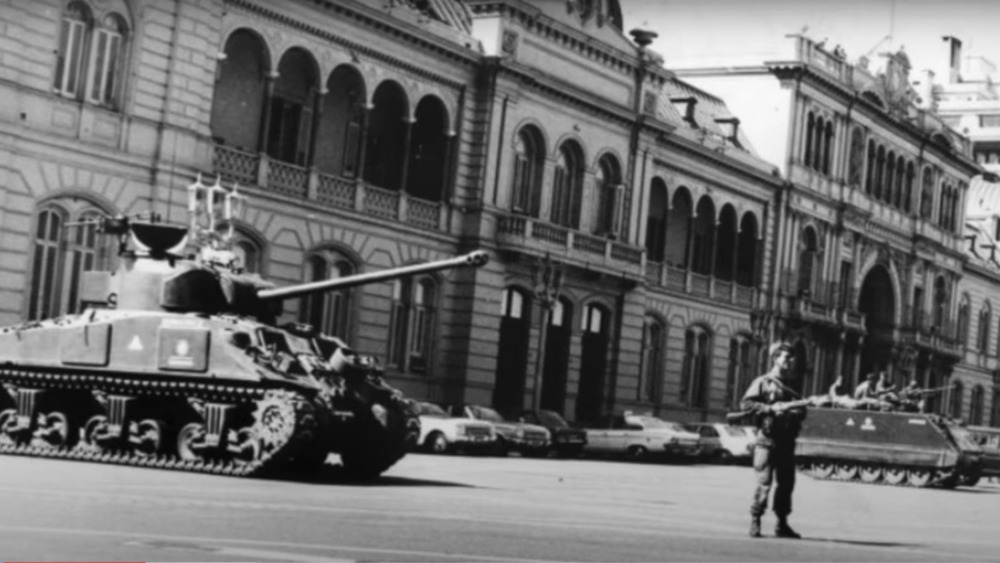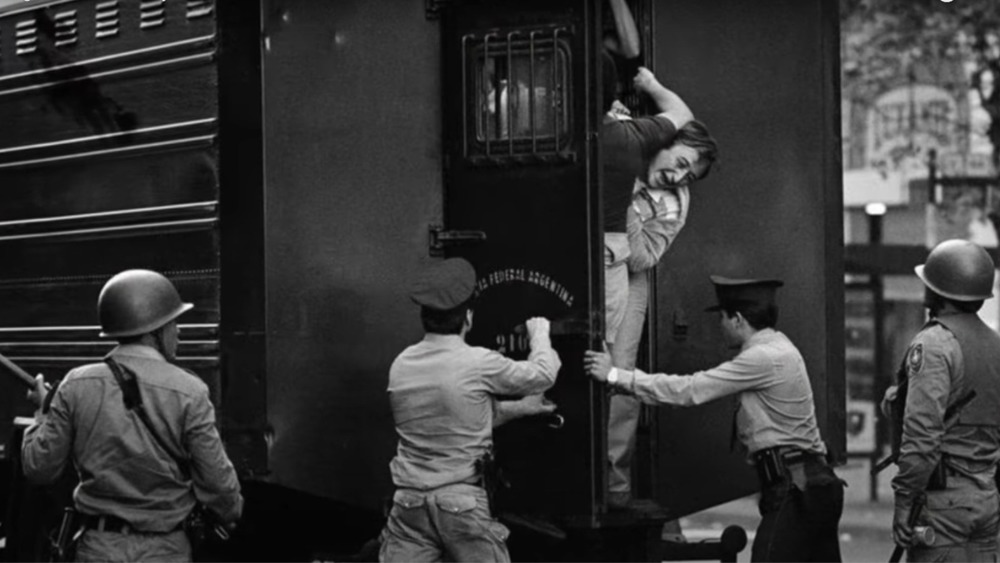The Truth Behind Adolfo Scilingo's Death Flights
From 1976 to 1983, Argentina's right-wing military dictatorship conducted the Dirty War against those it suspected of being part of the leftist political opposition. According to Britannica, between 10,000 and 30,000 people are estimated to have been killed during this period, many of them "disappeared" by various methods. A military coup deposed Argentine President Isabel Perón on March 29, 1976, and a junta comprised of just three military officers installed Lieutenant General Jorge Rafael Videla as president five days later. Videla shut down the National Congress, instituted strict censorship regulations, prohibited trade unions, and brought all levels of government under military control. As The Guardian reported in 2004, the dictatorship would carry out its six-year reign of terror with the explicit and surreptitious support of the U.S. government. "If there are things that have to be done, you should do them quickly," former Secretary of State Henry Kissinger told the Argentine foreign minister a few months after the coup. "We won't cause you unnecessary difficulties. If you can finish before Congress gets back, the better."
One of those "things that had to be done" was what were called "death flights," in which citizens believed to be left-wing political opponents of the regime were sedated and thrown from airplanes over the Atlantic Ocean. The incidents had been documented with evidence and testimony in the years following the dictatorship, but in 1995, one man who had participated in them described the death flights in chilling detail.
Adolfo Scilingo participated in multiple death flights
In 1995, a former Argentine navy lieutenant commander named Adolfo Scilingo came forth with comprehensive accounts of the part he played in the dictatorship's death flights campaign. He compared his experience to images he had seen of Nazi death camps. "The mental problem I have is there when they were piled up, I mean, when they were lined up, very similar to the World War II photos," he said, according to the L. A. Times. Scilingo led the crew of two death flights that left from a Buenos Aires military airport in the summer of 1977. He said that the prisoners were told they were going to be transferred to concentration camps elsewhere in the country and needed to be vaccinated. But the "vaccine" they were given was actually a sedative that rendered them nearly unable to walk.
Once on the plane, they were given another sedative that completely knocked them out, and then they were stripped naked. The crew flew them out over the ocean, where they knew the currents would most likely carry the bodies out to sea, and threw the victims out of the plane. "I personally threw them out," said Scilingo, who added that at one point he almost fell out of the plane himself. To this day he is haunted by the possibility, stating that he often envisions himself plummeting into the cold depths of the Atlantic.
For Adolfo Scilingo, 'just following orders' couldn't justify what he had done on the death flights
Scilingo said that he, like other lower-ranking officers, told himself that he was just following orders. "At that moment, I didn't feel anything. I mean, I didn't feel anything because I was doing a job," he said. "I still wasn't conscious of the problem. I still hadn't accepted the reality." But the pang of conscience set in when a younger officer began to cry as they undressed the victims they were going to throw into the sea. "I tried to explain to him the unexplainable. ... I told him it was a mission required by the Fatherland, that [it] was the way things were, that we had to accept them. ... For me, it was traumatic."
Lawyer and human rights activist Emilio Mignone, whose own daughter he believes to have been killed on one such flight, said that the Argentine navy ordered all officers to participate in the flights so that all would be compromised and keep their mouths shut. But the guilt was too much for Scilingo to keep silent. The BBC reported in 2005 that a Spanish court had found him guilty of crimes against humanity and sentenced him to 640 years in prison. He denied the charges at the trial. Despite his sentence, by January 2020 he was reportedly living in Spain in a "social integration center" that allowed him to leave during the day, according to the Buenos Aires Times.


